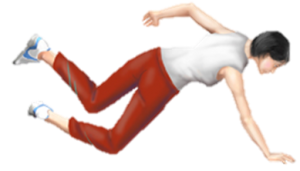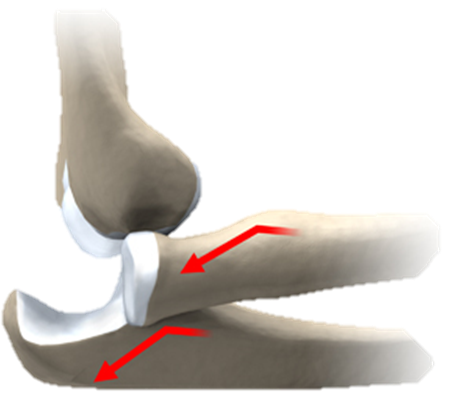A dislocated elbow occurs when the bones that make up the joint are forced out of alignment — typically when you land on an outstretched hand during a fall.
The elbow is the second most commonly dislocated joint after the shoulder in adults, and the most commonly dislocated joint in children
Symptoms
- Severe pain in the elbow
- Swelling
- Obvious deformity (more so incomplete dislocations)
- Bruising on the inside and outside of the elbow
- An inability to bend your arm
- In some cases, you may lose feeling in your hand or no longer have a pulse

Causes
A dislocated elbow occurs usually as a result of a fall, or a direct blow.
The most common mechanism involves falling onto an outstretched hand, with the arm away from the body and the elbow being forcibly flexed on contact.
There is usually also a twisting movement. This results in a posterior dislocation which accounts for up to 90% of all elbow dislocations.
In a posterior dislocation, the Ulna or the Radius move backward.
When the elbow is dislocated posteriorly this can be either partial (also known as a subluxation) or complete.
Dislocations usually involve damage to surrounding structures, most often the ligaments of the elbow joint, fractures to the Radius or Ulna or damage to the nerves or blood vessels which pass close to the elbow joint which may become trapped (pinched) by the moving bone.

Treatment
- DO NOT attempt to ‘pop it back in’ yourself!
- This can cause further damage.
- Apply ice or cold therapy to the elbow.
- Put the elbow in a sling to support it
In a complete dislocation (or a partial dislocation which has not reduced itself) a reduction will be performed to return the elbow back to the correct position.
The elbow is rested in a sling for between 1 and 3 weeks dependant on the extent of the damage.
Following a period of immobilization, gentle mobility exercises should be commenced to increase the range of motion at the elbow joint.
Once the range of motion is close to normal, strengthening exercises for the muscles surrounding the elbow should begin.
More severe injuries may need surgery. Elbow dislocations are serious injuries that take at least 4 to 6 weeks to heal.
Contact Me
Let's chat!
Need more information? Send me an email or drop me a line. I don’t bite!
- Charlotte@rehabontheroad.co.uk
- 07971448719

